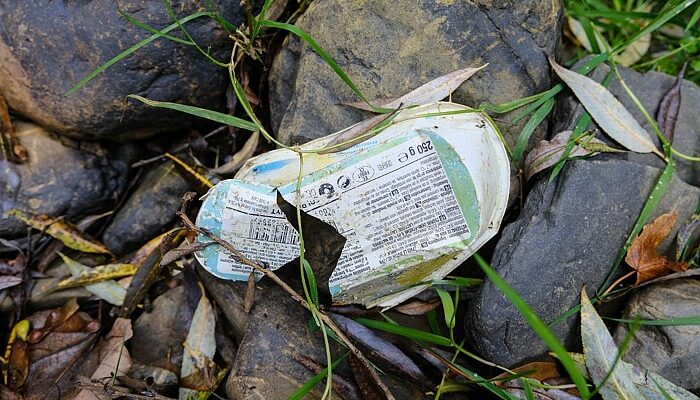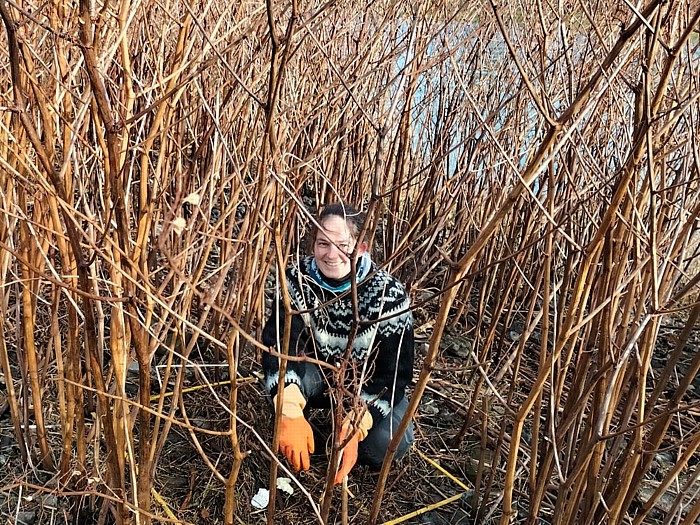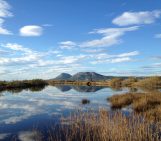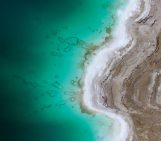
In July 2021, the Benelux area, Germany, and France experienced heavy rainfall followed by mass flooding, causing widespread damage. Along the vast quantities of plastic swept along the riverbanks, Rahel Hauk, a researcher from Wageningen University, conducted fieldwork to assess the impact of the flood event on plastic deposition. Amidst the debris, Hauk and her colleagues noticed a large volume of specific plastic butter tubs. She noted them separately and over the following two years asked citizen scientists from the Schone Rivieren project who contribute to plastic deposition monitoring to do the same. Two years later, the extra data offered new insight into understanding plastic transport in rivers; a field that, particularly during floods, presents many unknowns.
Hauk examined the butter tubs, revealing that they came from a dairy supplier impacted by the floods further upstream in the Meuse catchment. Approximately 8 million empty dairy packages were swept away by the floodwaters from the facility. While the flood was undoubtedly devastating, Hauk recognized that it could also be an opportunity.

Hauk examines plastic samples. Fieldwork photo: Louise Schreyers / courtesy of Rahel Hauk
Conventional studies on plastic pollution in rivers often rely on (GPS) trackers to simulate the behavior of litter. Yet this approach has several limitations including the fact that trackers are usually heavier than the actual pieces they mimic, as well as having limited battery capacity. Alternatively, studying found plastic items on riverbanks cannot provide information on how long they have been there, or where they were emitted. On the other hand, the circumstances of the flood offered a unique setting with a known timeline and location where the plastics entered the environment.
“When you do fieldwork, keep records if you notice something unusual; you never know where it leads,” Hauk said.
Hauk’s study, believed to be the first of a kind examining spillage in a fresh-water environment, focused on the transport and deposition of butter tubs in the Dutch Meuse for two years following the flood. Buttertubs were collected periodically to assess fragmentation and mass loss. Within three weeks post-flood, they traveled as far as 328 km from the spill site. Notably, 78% of the buttertubs discovered in the initial three weeks settled within 100 km of the emission point. It supports the previous studies that used GPS trackers in debunking the notion that all plastic reaches the sea. Instead, it shows that the majority of plastic debris does not travel far and that much of it tends to accumulate along the river’s path. The research confirms that spilling events can be used for plastic monitoring and spotlight that a project planning for plastic monitoring should consider unexpected events.
“Natural hazards like floods can have tragic consequences, yet they can also present an opportunity to collect new data that wouldn’t be otherwise available,” Hauk added.
Moreover, Hauk emphasized the importance of initiating local cleanup efforts promptly after such events to prevent further dispersion and mitigate resource-intensive cleanup in the future. The study adds to the observation that as plastic travels farther and more time passes, cleaning efforts become increasingly challenging.
If you are interested in Hauk’s research, visit the relevant poster session (HS2.3.5); you can also get in touch at rahel.hauk@wur.nl.




